Every gardener runs into common problems during the summer from blight to weeds to pests but few of us are willing to resort to pesticides or herbicides. These healthy garden tips can help minimize and eliminate pests in your garden and protect your plants as they grow.
#1 Start with the soil.
 A healthy garden begins with the best soil you can find or create. For brand new gardens, buy the best from a garden center. Don’t be tempted to fill up from your community compost pile – these are often filled with weed seeds and worst yet, diseased plants. If you have an established garden, feed it in early spring with a good, rich compost or manure. Rototill this in well and let sit for a week or two before planting so it can settle and warm up.
A healthy garden begins with the best soil you can find or create. For brand new gardens, buy the best from a garden center. Don’t be tempted to fill up from your community compost pile – these are often filled with weed seeds and worst yet, diseased plants. If you have an established garden, feed it in early spring with a good, rich compost or manure. Rototill this in well and let sit for a week or two before planting so it can settle and warm up.
Do you have blight in your garden? If you’ve noticed healthy tomato plant leaves suddenly turning brown and shriveling up, you probably have blight in your soil. The spores attach to droplets of water, splash up on the leaves, and eventually defoliate the whole plant. If you’ve had blight, you must either replace the soil or wait a few years before planting blight-susceptible plants in it. Frustrating I know!
#2 Use mulch (yes, even in your vegetable garden!).
After planting, lay down a thick layer of natural mulch (not treated wood chips). Great choices are hay, untreated grass clippings, or newspaper. These materials will keep weed growth down, help the roots retain water, and by the end of summer decompose to feed the soil.
#3 Pay attention to weeds and water.
 We all know how busy life gets and we sometimes let the weeds take over or miss a day of watering. And we know this hurts our plants. But did you know it actually helps the pests and diseases? Big, bountiful, healthy plants (that are well-watered and maintained) actually keep weed growth down and are more resistant to diseases. Struggling plants will give weeds a foothold and attract opportunistic pests. If you find diseased or pest-attacked plants, dispose of them away from your own compost pile and clean your garden tools with a mild bleach solution.
We all know how busy life gets and we sometimes let the weeds take over or miss a day of watering. And we know this hurts our plants. But did you know it actually helps the pests and diseases? Big, bountiful, healthy plants (that are well-watered and maintained) actually keep weed growth down and are more resistant to diseases. Struggling plants will give weeds a foothold and attract opportunistic pests. If you find diseased or pest-attacked plants, dispose of them away from your own compost pile and clean your garden tools with a mild bleach solution.
#4 Start with good, quality plants.
Whether you grow from seed or buy from a nursery, choose plants that are suited to your climate and are raised without insecticides (bad for pollinators) or pesticides (bad for people). Always, always harden off your plants before planting and follow a regular feeding schedule during the growing season.
#5 Plant like crazy.
 The best way to really stymie the pests is to plant your garden in a haphazard style. Combine multiple and different plants in one row, mix and match herbs and flowers, and create a more free flow style or cottage garden look within your fences. This gives you the advantages of companion planting (more on that here) but also truly confuses rabbits and deer! They will pass by your garden if the beans are hidden within a barrier of marigolds and deer-repelling hot peppers.
The best way to really stymie the pests is to plant your garden in a haphazard style. Combine multiple and different plants in one row, mix and match herbs and flowers, and create a more free flow style or cottage garden look within your fences. This gives you the advantages of companion planting (more on that here) but also truly confuses rabbits and deer! They will pass by your garden if the beans are hidden within a barrier of marigolds and deer-repelling hot peppers.
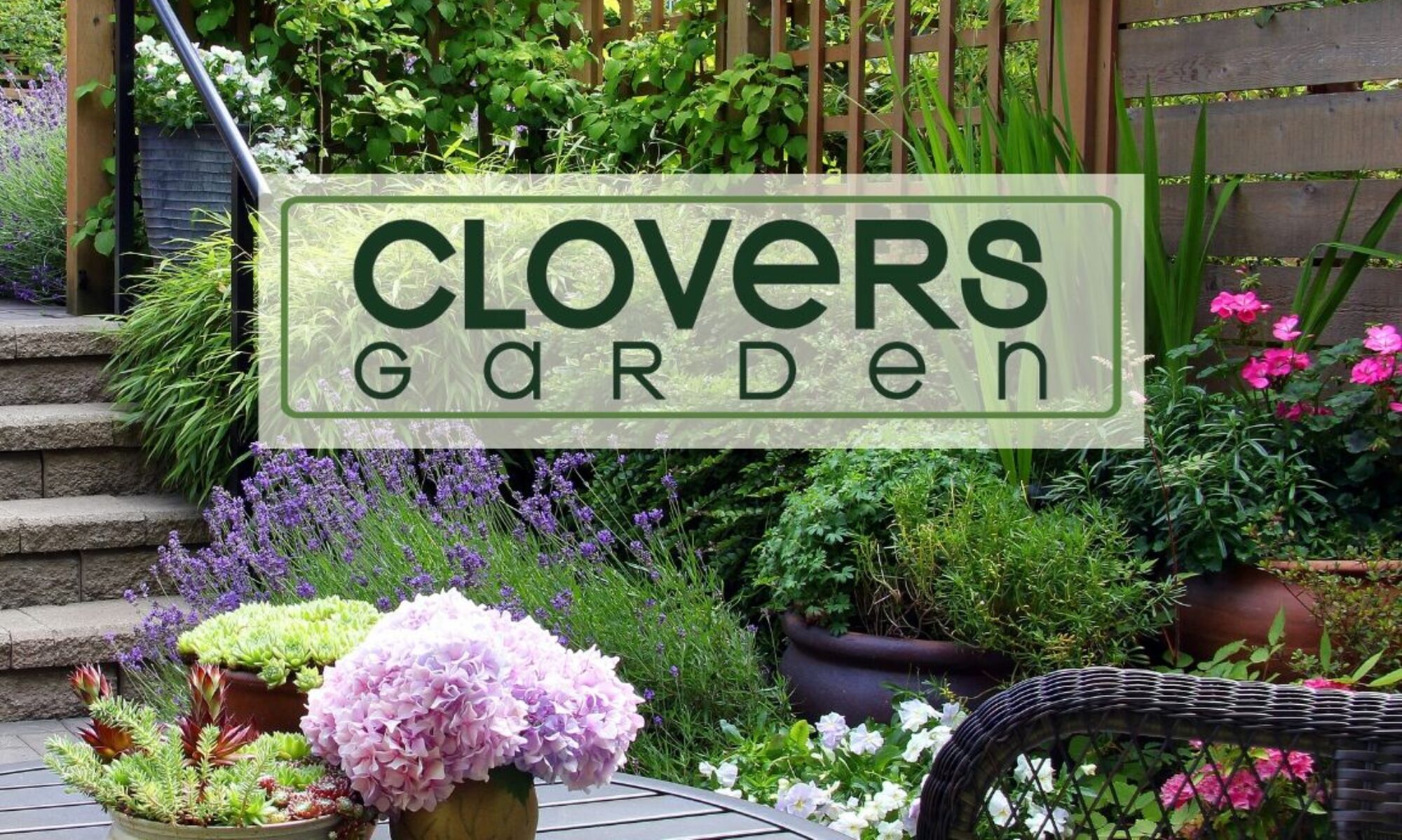
 If it flowers, butterflies of all stripes will be happy to visit your gardens but did you know there is one plant that Monarchs cannot live without? Common Milkweed is a necessity for Monarch caterpillars. While Monarch butterflies will feed on many different flowering plants, they only lays eggs on Milkweed because it is the ONLY plant the caterpillar eats until it goes into the chrysalis. In fact, the chemical compounds in this plant protect the caterpillars from getting eaten! Milkweed contains a cardiac poison that caterpillars are immune to but makes them taste bad – and become poisonous – to predators. Over time predators have come to see the unique coloration of the Monarch caterpillar as a warning and leave it alone!
If it flowers, butterflies of all stripes will be happy to visit your gardens but did you know there is one plant that Monarchs cannot live without? Common Milkweed is a necessity for Monarch caterpillars. While Monarch butterflies will feed on many different flowering plants, they only lays eggs on Milkweed because it is the ONLY plant the caterpillar eats until it goes into the chrysalis. In fact, the chemical compounds in this plant protect the caterpillars from getting eaten! Milkweed contains a cardiac poison that caterpillars are immune to but makes them taste bad – and become poisonous – to predators. Over time predators have come to see the unique coloration of the Monarch caterpillar as a warning and leave it alone! During summer and with enough habitat along the way, four generations of Monarchs will emerge, each one flying further North. But without Milkweed corridors, Monarchs must fly greater distances before laying eggs and consequently reproduce less and less over each summer. Herbicidal control and increased agricultural land use has eliminated much of the U.S. milkweed, creating a critical turning point in the Monarch population. So much so that the U.S. Fish & Wildlife Service is considering including the Monarch Butterfly on its Endangered Species List.
During summer and with enough habitat along the way, four generations of Monarchs will emerge, each one flying further North. But without Milkweed corridors, Monarchs must fly greater distances before laying eggs and consequently reproduce less and less over each summer. Herbicidal control and increased agricultural land use has eliminated much of the U.S. milkweed, creating a critical turning point in the Monarch population. So much so that the U.S. Fish & Wildlife Service is considering including the Monarch Butterfly on its Endangered Species List. 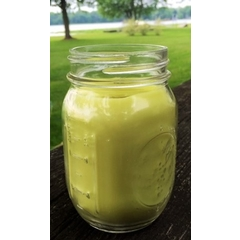 Flickering light adds so much to your outdoor spaces and these gorgeous, long-burning jar candles do double-duty because they also repel mosquitoes! And more is better when it comes to this decorating item . . . choose the scent you love, they all work to drive biting insects from your party. Or combine colors and scents to match your patio décor. Another bonus? These candles have screw-on lids so when the party’s over, you can close them up to protect from rainwater.
Flickering light adds so much to your outdoor spaces and these gorgeous, long-burning jar candles do double-duty because they also repel mosquitoes! And more is better when it comes to this decorating item . . . choose the scent you love, they all work to drive biting insects from your party. Or combine colors and scents to match your patio décor. Another bonus? These candles have screw-on lids so when the party’s over, you can close them up to protect from rainwater.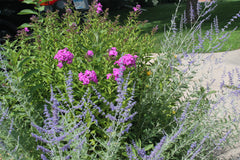 When you start looking at herbs or veggies as a container element – instead of in a garden row – you’ll be surprised by the range of textures and colors. Combined with flowers, herbs add depth to your patio pots and all alone they create interesting combinations. Try putting a spiller-type herb like Creeping Lemon Thyme with a thriller flower such as French Vanilla Snapdragon. Or create an entire container of herbs with contrasting colors and textures such as the multi-colored Tricolor Sage, light Silver Edge Thyme and the lovely flowering Hidcote Lavender. Herbs such as basil and mint add rich undertone scents to your spaces and will attract birds or butterflies. Be sure to choose combinations, though, with the same water, sun, and drainage needs and be aware that some herbs will grow profusely and need occasional trimming to avoid overcrowding.
When you start looking at herbs or veggies as a container element – instead of in a garden row – you’ll be surprised by the range of textures and colors. Combined with flowers, herbs add depth to your patio pots and all alone they create interesting combinations. Try putting a spiller-type herb like Creeping Lemon Thyme with a thriller flower such as French Vanilla Snapdragon. Or create an entire container of herbs with contrasting colors and textures such as the multi-colored Tricolor Sage, light Silver Edge Thyme and the lovely flowering Hidcote Lavender. Herbs such as basil and mint add rich undertone scents to your spaces and will attract birds or butterflies. Be sure to choose combinations, though, with the same water, sun, and drainage needs and be aware that some herbs will grow profusely and need occasional trimming to avoid overcrowding. Little Gardeners Tip: Gardening with herbs shows your kids the connection between scent and flavor. Rub a leaf between your fingers to release the smell and ask your children to guess the food they’d find that herb in. They’ll be amazed when they see what a “dill pickle” plant looks like!
Little Gardeners Tip: Gardening with herbs shows your kids the connection between scent and flavor. Rub a leaf between your fingers to release the smell and ask your children to guess the food they’d find that herb in. They’ll be amazed when they see what a “dill pickle” plant looks like!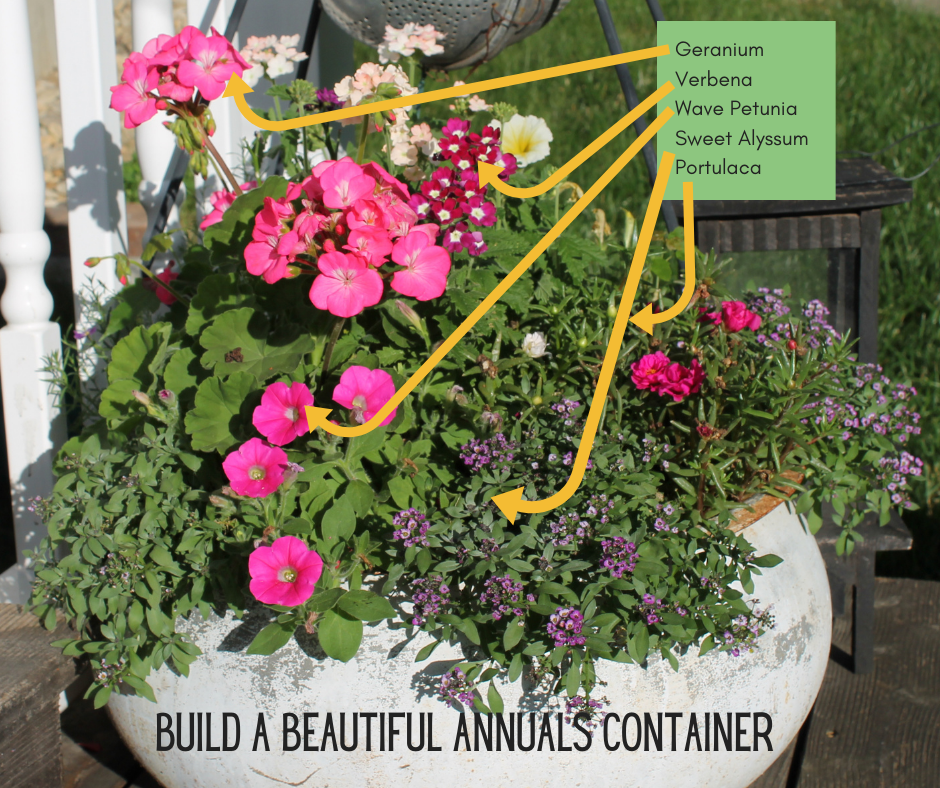
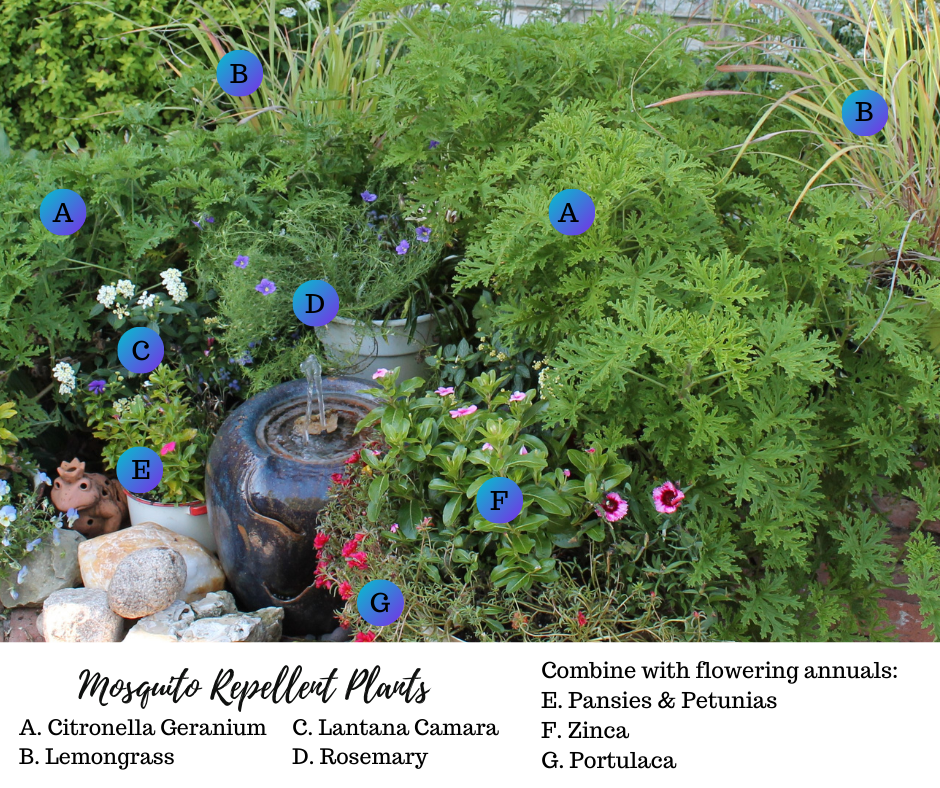
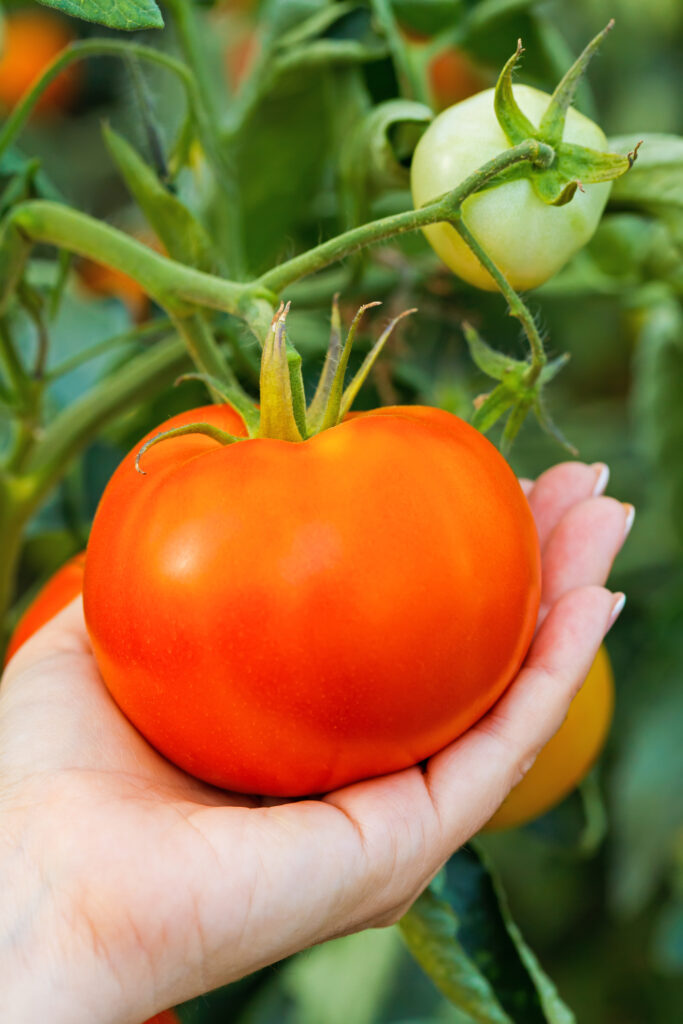
 Sometimes choosing the right variety, though, can be totally overwhelming. With so many choices out there, many of us just cross our fingers and pick the prettiest plant! The type of tomato you choose starts with how you plan to use the produce. If you’re going to make salsas or sauces, choose a tomato with a meaty flesh as these hold up well when cooking, canning, or freezing. If you’re planning on eating them fresh off-the-vine, choose a salad or cherry tomato that has a bit higher water content and is usually sweeter. Many varieties in the beefsteak category fit both of these bills so are a good choice all around. Your growing space also determines what type of plant to buy as some of the heirloom varieties can require a lot of room to grow well.
Sometimes choosing the right variety, though, can be totally overwhelming. With so many choices out there, many of us just cross our fingers and pick the prettiest plant! The type of tomato you choose starts with how you plan to use the produce. If you’re going to make salsas or sauces, choose a tomato with a meaty flesh as these hold up well when cooking, canning, or freezing. If you’re planning on eating them fresh off-the-vine, choose a salad or cherry tomato that has a bit higher water content and is usually sweeter. Many varieties in the beefsteak category fit both of these bills so are a good choice all around. Your growing space also determines what type of plant to buy as some of the heirloom varieties can require a lot of room to grow well. Beefsteak. These are the largest tomatoes you can find and tend to be flatter with meaty flesh. They are delicious freshly sliced but also hold up well when cooked. Because of the heavy fruit, these plants require good supports or the vines will break under the weight of the tomato.
Beefsteak. These are the largest tomatoes you can find and tend to be flatter with meaty flesh. They are delicious freshly sliced but also hold up well when cooked. Because of the heavy fruit, these plants require good supports or the vines will break under the weight of the tomato. Cherry, Currant, or Grape. These are the sweet little tomatoes often used in salads, shishkabobs, and other fresh dishes. The fruits grow in clusters along the vine and are usually abundant producers for most of the growing season.
Cherry, Currant, or Grape. These are the sweet little tomatoes often used in salads, shishkabobs, and other fresh dishes. The fruits grow in clusters along the vine and are usually abundant producers for most of the growing season. Roma, Plum, or Paste. These tomatoes have thick and meaty flesh, an elongated shape with a pointy end, and grow to a medium size. They are prolific producers and are the go-to tomato for the sauce and salsa maker.
Roma, Plum, or Paste. These tomatoes have thick and meaty flesh, an elongated shape with a pointy end, and grow to a medium size. They are prolific producers and are the go-to tomato for the sauce and salsa maker.